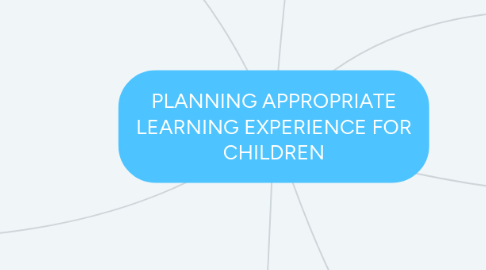
1. Tracking goals
1.1. Teachers need to keep track of children's holistic development. Teachers must keep emphasizing on the topics the child has went through in the year.
1.1.1. Teachers must link back to all the learning areas to the topics they have learnt.
1.1.2. For example, talking about plants is a part of their Language & Literacy and counting the number of days they have watered or the growth is their part of numeracy.
2. Developing activity plans
2.1. Awareness
2.1.1. Create interest about the topic that the teacher is going to teach about. Relate children with the topic and ask them questions regarding the theme to simulate their thinking.
2.1.1.1. For example, if the topic is about plants, show them the different types of plants and leaves.
2.2. Explorations
2.2.1. Plan on a field trip in regards to the topic.
2.2.1.1. Bring them to a nearby garden if their topic is about leaves and tell them how plants are grown and what gardeners do.
2.3. Acquisition
2.3.1. Set up a discovery of world corner and grow a plant in the classroom. Let children have a close interaction with plant and talk about the growth of the plant.
2.3.1.1. Teacher can set up a routines on children to water the plants.
2.4. Application
2.4.1. This is to let children do up a self reflection and share their observation
2.4.1.1. Children can do a write up and draw the growth of the plant and compare their observations between their peers.
3. Selecting the activities
3.1. teachers should choose activities which children and relate more to their personal experience and let them express their views and thoughts. E.g: Families.
4. Setting the context
4.1. Appropriate learning objectives
4.1.1. For K2s, example of a learning objective is for a child to able to learn about good values. This can be done during sharing sessions.
4.2. Children's interests and abilities
4.2.1. Observe what intrigues children and what they can do so as to organise the best kind of activity for them. E.g: Children who love music and movement can be taught songs and dance moves to introduce them to a theme.
4.3. Children's prior knowledge and experience
4.3.1. Children can learn about a particular topic by relating to their personal experience.
5. Determining Learning Goals
5.1. What is the main objective?
5.1.1. The teacher determines what the children are expected to learn for the year based on the framework
5.1.2. Learning goals include touching on learning areas such as aesthetics, numeracy, social and emotional development and more

